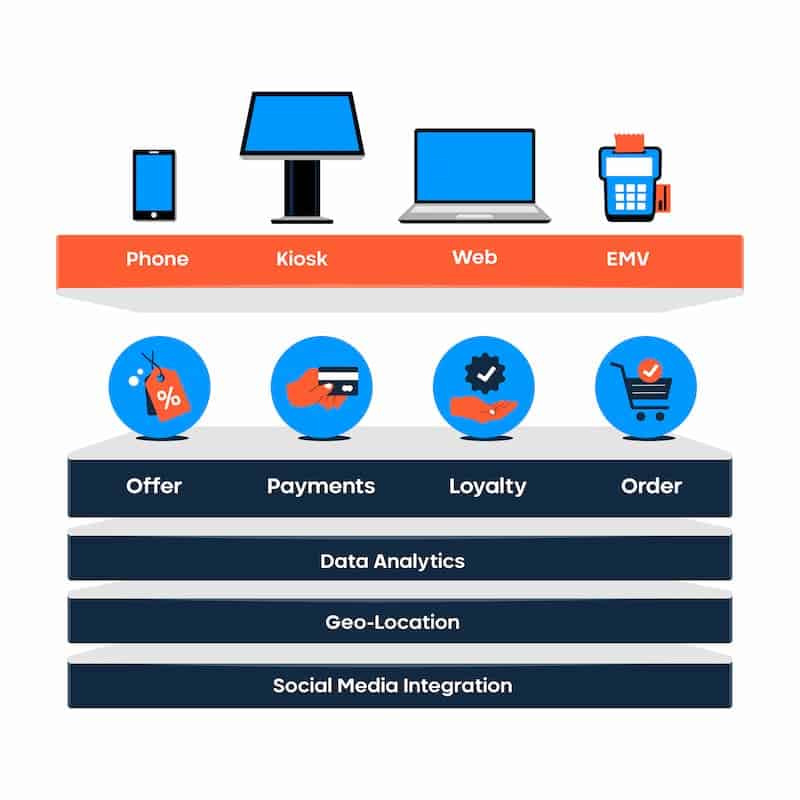
Written by CardFree Founder and CRO, Alan Paul:
There is an underlying assumption, often bolstered by restaurant tech pundits, that it’s not feasible for a tech company to be best-in-class in more than one thing. We don’t agree with that as a blanket statement, but, regardless, the narrative misses a crucial point: a suite of services purpose-built to work seamlessly together often delivers the best outcomes. Even if individual components aren’t considered “best-in-class” on their own, a cohesive, purpose-built stack can provide superior results for restaurants.
Integrations Are More Than Just Checking a Box
Many restaurant-tech products are not built to seamlessly integrate with other vendors’ products, forcing operators into frustrating setups. We’ve done a lot of third-party integrations, and we are often forced to employ workarounds or create a less-than-ideal flow based on the third-party’s APIs / architecture. Each additional workaround or patch adds potential points of failure, reducing overall reliability and stability. Moreover, not all integrations are built equal, both in terms of the quality and depth of the integration.
Incongruent Architectures Can Create A Poor Customer Experience
The APIs a vendor exposes, or lack thereof, can lead to workarounds and a less-than-ideal flow that adversely affects the guest (or operator) experience. For example, one loyalty vendor we integrate with requires email / password for login for ALL online flows. Our preferred flow for in-store use cases such as Pay@Table and Order@Table is phone number check-in (with 2FA for redemption) to minimize friction and drop-off. This inconsistency means the “integration” technically works but disrupts the user experience by adding unnecessary steps. In the competitive restaurant landscape, even slight disruptions in CX can impact guest loyalty and satisfaction.
Siloed Solutions
Even when APIs are simpatico, there are other issues at stake. Consider ordering, for example: a restaurant could have different partners for online, kiosk, and third-party ordering, each with its own menu management. That’s a headache for ops. It is also shockingly common for brands to have different front-end providers for online, app, and kiosk with completely different UI / UX. Not only does that create an inconsistent brand experience, but, again, the guest experience suffers. Things such as saved favorites, order history, and card-on-file are completely walled-off between different systems, which is frustrating for customers, diminishing the seamless experience they’ve come to expect.

Different Priorities
The unfortunate reality is that most vendors – particularly the big guys – do not care about suboptimal guest / operator experiences if rectifying them means they have to do something. The aforementioned loyalty provider, for example, said they have no intentions of supporting phone number-only logins for in-store use cases despite the fact that the client desperately wants that flow, and it is technically feasible with their current APIs. The client is not small, but they are not huge. Larger brands often have more influence over vendors’ development roadmaps, but smaller operators are left to manage with rigid, one-size-fits-all solutions that don’t reflect their specific needs.
More to Manage, More Mouths to Feed
Lastly, the obvious — more vendors mean more points of contact, more calls, more playing middleman, more politics, etc, etc. It typically also means a higher total cost of ownership that can come both from SaaS fees and custom development.
Conclusion: The Strategic Value of Integrated Restaurant Tech
For today’s restaurants, building a tech stack isn’t just about adding the latest tools; it’s about creating a cohesive ecosystem where each component supports the larger operational goals. Integrated restaurant tech offers a way to streamline processes, reduce redundancies, and improve both the guest and operator experience. When systems like ordering, payment, loyalty, and back-of-house operations work together seamlessly, restaurants can operate more efficiently, deliver a smoother guest experience, and reduce errors and bottlenecks that can frustrate both staff and customers.
Ultimately, integrated restaurant tech empowers operators to make more informed decisions, reduces overhead, and provides the scalability needed to adapt as the business grows. As restaurants evaluate their tech investments, they’ll need to think beyond siloed individual “best-in-class” features, as integration and interoperability are essential to build a stack that not only supports the business today but positions it for future success in a highly competitive market.
